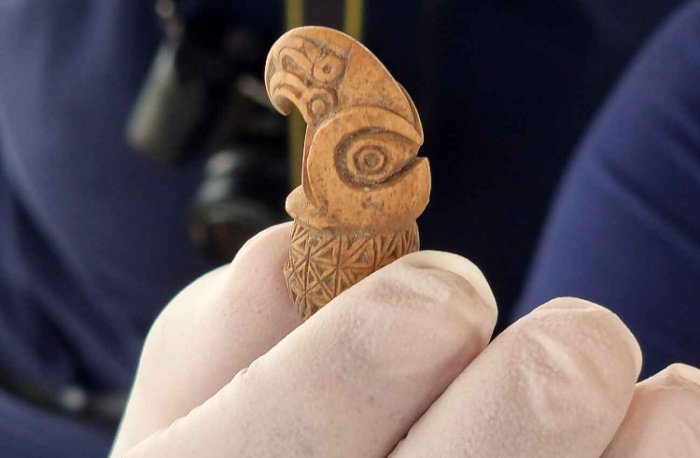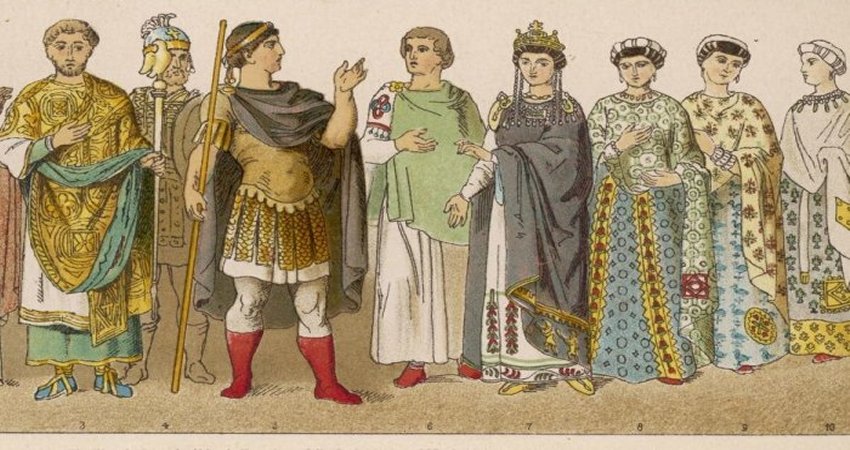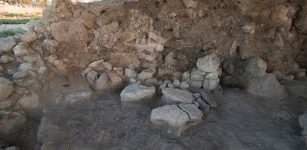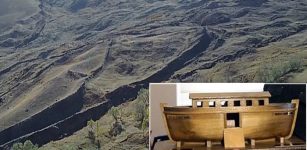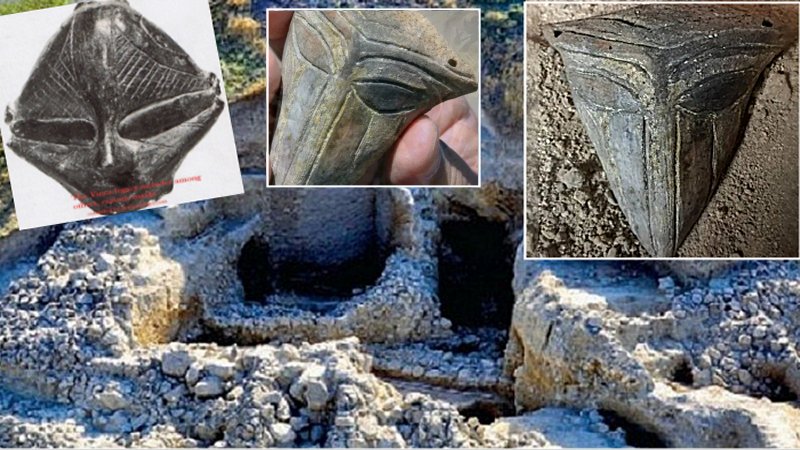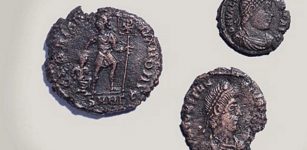Rare 2,500-Year-Old Scythian Bone Sceptre Discovered In Bulgaria
Jan Bartek – MessageToEagle.com – A rare 2,500-year-old Scythian bone sceptre has been found in a grave by archaeologists excavating in the prehistoric salt mining and urban center “Provadia – Solnitsata” in Northeast Bulgaria.
Credit: Danail Voikov/BTA
“The prehistoric complex of Provadia-Solnitsata, located near the modern town of Provadia, hosts the remains of the oldest salt production center in Europe (5500-4200 BC). It was the first prehistoric urban center in Europe (4700-4200 BC) consisting of a salt production center, a fortified stonewall settlement (citadel), a ritual ground (sacrificial pit) and a necropolis.
The complex occupies an area of approximately 13 hectares. Its origin and development are closely related to the only rock salt deposit in the Eastern Balkans, the so-called Mirovsko salt deposit underlying the settlement.” 1
The prehistoric complex of Provadia-Solnitsata. Credit: Wikipedia – CC BY-SA 4.0
The Scythians were a multitude of horse-warrior nomad cultures dwelling in the Eurasian steppe during the first millennium BCE. Because of the lack of first-hand written records, little is known about their origins and relations among the different cultures. Relying on ancient DNA, scientists have made attempts to unravel the history of the Scythians from the Central Asian steppe.
Generally thought of as fierce horse warriors, the Scythians were a multitude of Iron Age cultures who ruled the Eurasian steppe, playing a major role in Eurasian history.
Ancient artifacts and burials offer a better understanding of the Scythians and their movements across Eurasia, but some finds are rare.
Credit: Danail Voikov/BTA
According to Vasil Nikolov, who led the excavation at Provadia-Solnitsata, Scythian tombs are extremely rare in Northeastern Bulgaria, and only four or five have been unearthed until now.
The archeologist explains that the excavated Scythian pit differs from those unearthed so far.
As reported by the Bulgarian News Agency, “the shape of the Scythian warrior’s grave resembles a boot, with a hollowed-out part. It was apparently excavated in later times, but people saw the skull and upper part of the man’s skeleton, which are missing today, and stopped immediately, explained Nikolov. Archaeologists have now found the bone scepter, which the researcher described as “an incredible achievement of the art of that time.”
Alongside the human bones, they also found those of a horse, a small dog and a turtle. The warrior was buried with an iron knife, but over the centuries the weapon has corroded and is in very poor condition.
According to scientists, in the Early Bronze Age, the Scythians buried their people in already existing mounds. This is the first time a grave has been found in a settlement mound, Nikolov pointed out.
The Scythians had exceptional traditions in the art of bone carving. The sceptre is proof of the skills of their masters, Nikolov noted and added that it probably belonged to a military commander of a small military unit. The bones of the horse in his grave suggest that the man was a cavalryman.
Credit: Danail Voikov/BTA
The sceptre is 39 centimetres long. The handle is made of two pieces of bone glued together. The connection between the head and the handle of the sceptre is very precisely crafted.
Seen from one side it looks like the beak of an eagle, but on the other the ancient craftsman has carved an anthropomorphic image on which the beak looks like a hat.
See also: More Archaeology News
“I consulted one of the best experts on Scythian culture, the director of the Varna History Museum, Igor Lazarenko, but he, too, does not know of such a bone sceptre having been found before,” Nikolov said.
“Those found so far are usually cruciform, with an ornithomorphic upper part. Most often the craftsmen carved an eagle, because this bird is part of the Scythian religious-mythological system,” he added.
Written by Jan Bartek – MessageToEagle.com – AncientPages.com Staff Writer

